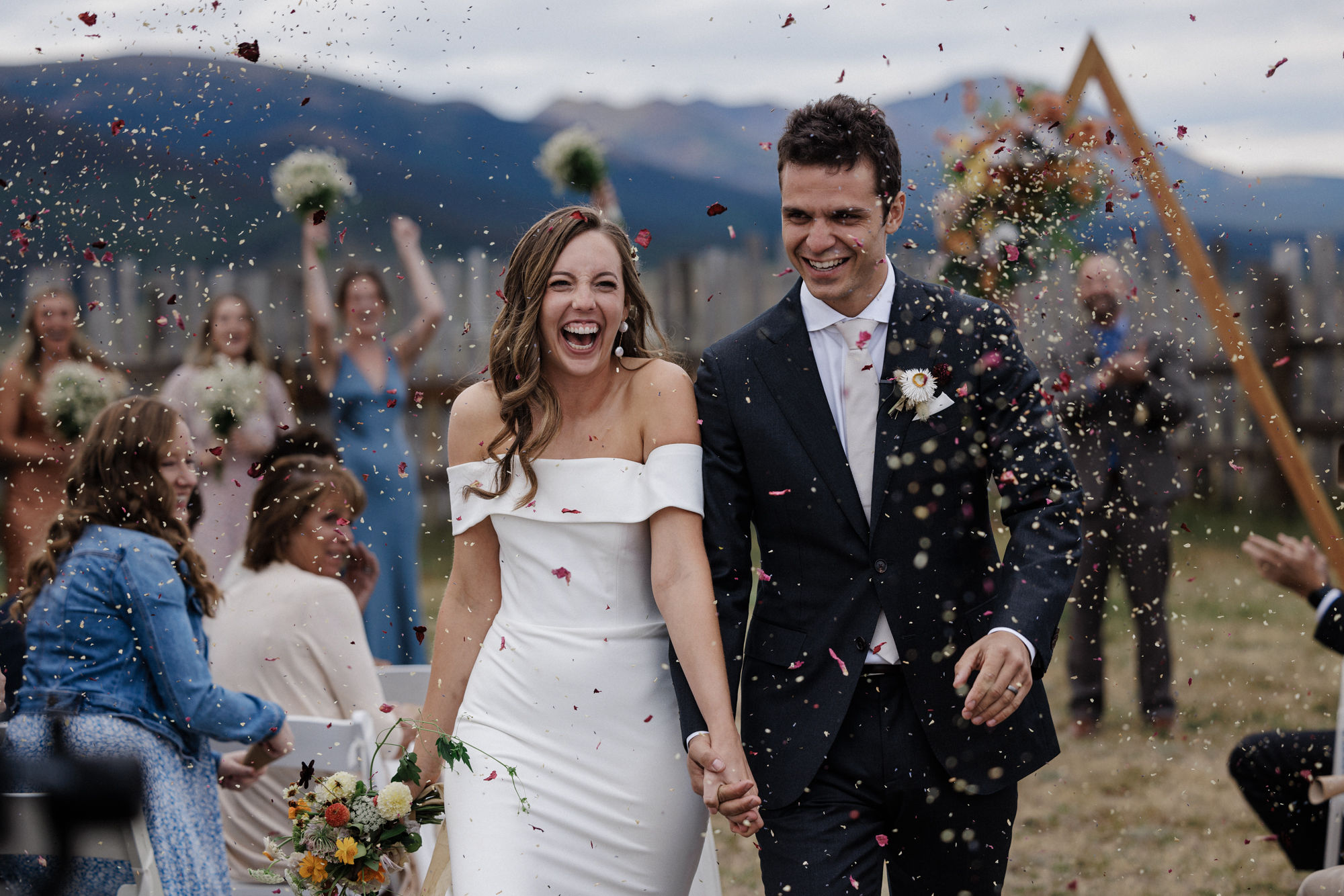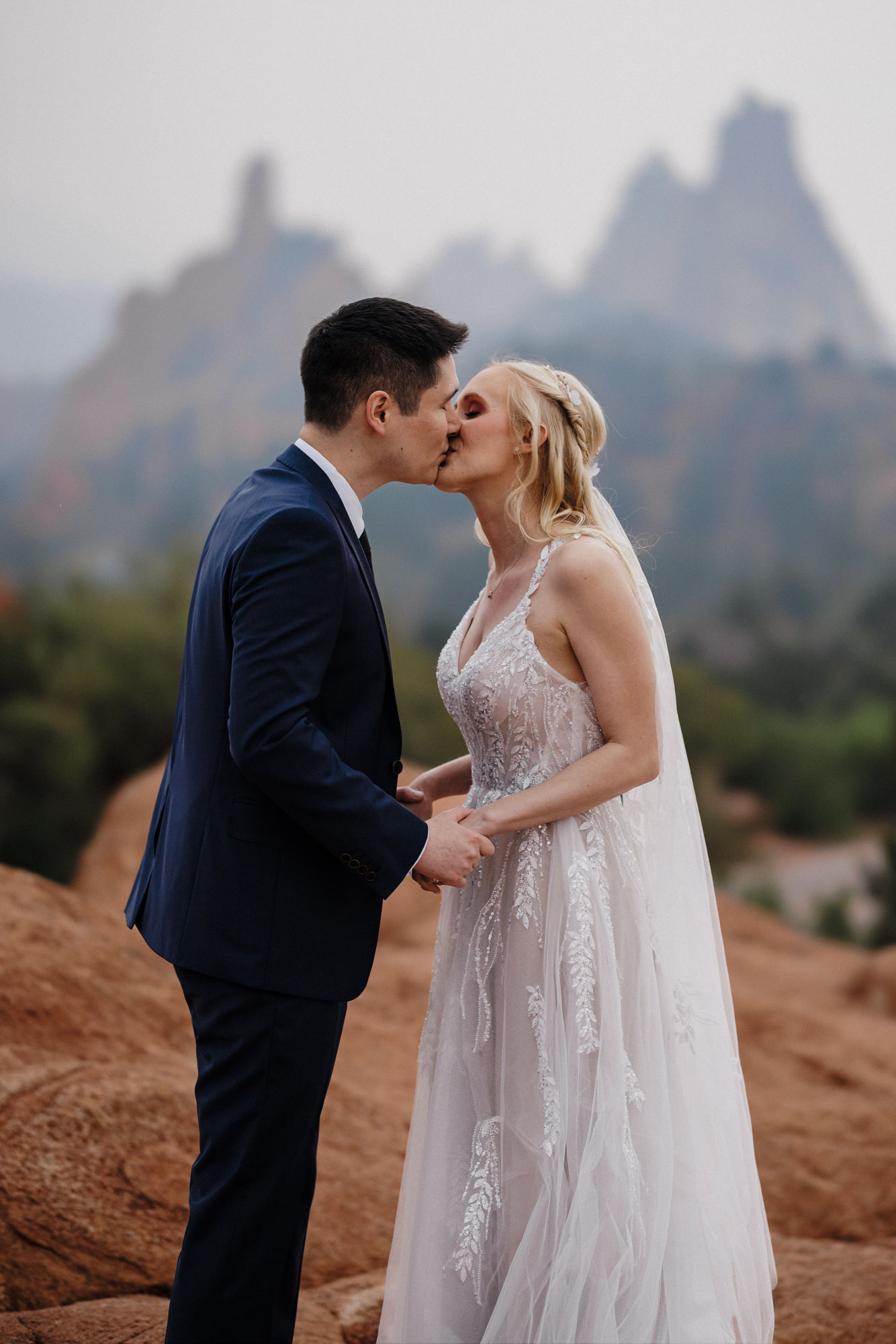Colorado micro wedding + elopement photographer
How To Set & Track Your Micro Wedding or Elopement Budget

Hey, friend.
I'm Stephanie
Your photographer + intimate wedding planning wing woman.
I create unrushed and intentional wedding experiences so you can be fully present and authentically you on your best day.
Get to
know me
Packages + Pricing
Contact Me
Planning your wedding can be an amazing adventure. However, it can also bring along its fair share of nerves and tension, particularly when it comes to figuring out and setting your micro wedding or elopement budget. Many couples feel overwhelmed by the financial aspects of wedding planning, from outlining a budget to handling expenses throughout the process. It’s completely normal to experience this—after all, your wedding day holds incredible significance, and you naturally want to bring your dream to life without sabotaging your financial goals.
With thoughtful planning and prioritization, much of this stress can be mitigated. By budgeting methodically, you can ensure that your special day is both stunning and financially feasible. In this blog, I’ll lead you through the steps for creating a wedding budget that fits with your vision and financial capabilities.
“How much should you spend on a micro wedding? And how do you even budget for an elopement?” These are common questions that many couples have when starting their wedding planning journey. I’ll help you address these concerns and provide you with essential tips for effectively managing your wedding finances. From establishing a spending limit to monitoring your expenses, I’ll cover all the crucial factors that will help you keep track of your budget and ensure your special day is as stress-free and dreamy as you’ve envisioned.
Let’s get started and look into the ways you can accurately determine, set, and track your micro wedding or elopement budget, so that your special day lives up to all your expectations.
How To Determine, Set, & Track Your Micro Wedding or Elopement Budget
Step 2. Establish Your Elopement or Micro Wedding Budget Priorities
Step 3. Nail Down Your Guest Count
Step 4. Outline Potential Expenses
Elopement/Micro Wedding Budget Breakdown

How To Determine, Set, & Track Your Micro Wedding or Elopement Budget
Step 1. Set Your Price Limit
One of the first steps in creating your elopement or micro wedding budget is to set your upper price limit. This is the maximum amount you’re willing to spend on your special day. However, figuring out this number can feel a bit tricky, as it sets the tone for your entire wedding planning process.
First and foremost, it’s essential to ensure that both you and your partner are on the same page when it comes to setting this limit. Sit down together and have an open and honest discussion about your current finances, wedding day expectations, and future plans. Agreeing on a realistic budget will help prevent misunderstandings and disagreements later on.
When setting your price limit, think about your existing financial resources and any potential contributions from family members or gifts you might receive. Also, consider any ongoing income or assets you expect to build up leading to your wedding day. Taking a comprehensive look at your finances will give you a clearer picture of what you can afford to spend.
Remember, while deposits and retainers are standard in the wedding industry, many of your invoices won’t be due until closer to your wedding date. This allows you some flexibility in managing your finances and adjusting your budget as needed over time.
By setting a clear and realistic price limit from the get go, you’re laying a sound foundation for your wedding planning. This framework helps you make informed decisions about where to allocate your funds and ensures you stay within your financial means as you bring your wedding vision to life.


Step 2. Establish Your Elopement or Micro Wedding Budget Priorities
Establishing your priorities is a critical step to tailoring your wedding budget to align with your dream intimate wedding day. Identifying what truly matters to you will help ensure that your special day reflects your vision and values.
What are your non-negotiable wedding day must-haves? Is it certain people you cannot imagine your wedding day without? A specific location, quality photography, or a once-in-a-lifetime experience you want to include in your wedding day?
Here’s an exercise that I recommend my couples do to identify their wedding day priorities and create a roadmap for the rest of their planning:
• Begin by each grabbing a piece of paper and a pen. Take a moment to individually jot down the ten most crucial aspects you envision for your wedding day. This could include the ambiance, landscape, color scheme, specific activities, guest size, season, a dream vendor, or the inclusion of specific sentimental details. Remember, no peeking at each other’s lists – let this be a truly authentic and personal process.
• Once you have your personal lists, use a third piece of paper to create a master list. Combine the items you both included in your personal lists as well as your individual “must-haves.” This joint effort creates a comprehensive summary that is representative of both of your unique perspectives.
• With your compiled list, work together to rank the elements based on priority. Start with the aspects that deeply resonate with both of you and gradually work down the list. This ensures that you’re not only aligned but actively shaping your celebration around elements that hold the most meaning.
This exercise provides a clear and authentic understanding of your shared priorities and serves as a practical reference throughout your wedding planning journey. It becomes a reference point, allowing you to reconnect with your highest priorities as you plan your intimate wedding.

Step 3. Nail Down Your Guest Count
Nailing down your guest count isn’t just about who you want to share your special day with—it’s also a critical factor in effectively managing your wedding budget. With an estimated guest count, you’ll receive more accurate price estimates from vendors and be able to better allocate your budget accordingly. Your guest count will dramatically impact expenses related to food, drinks, and the space needed to accommodate your guests.
When considering your guest list, remember that decreasing the number of guests is the quickest and easiest way to reduce the cost of your wedding.
Take the time to carefully consider your wedding day vision. Is there someone you can’t picture your day without? Do you imagine a day with just you and your partner? Or do you picture yourself and your loved ones in cabin lodging, partying the night away? Reflect on your vision and outlined priorities to help make decisions regarding your guest list, and stay true to what feels right for you and your partner.

Step 4. Outline Potential Expenses
When creating your micro wedding or elopement budget, it’s essential to start off by outlining all potential expenses. Grab a notepad and jot down everything you’ll need to pay for. This includes the big things like venue reservations, catering costs, attire, and vendors, as well as the smaller expenses like permits and gifts. If digging into the smaller expenses feels overwhelming, outline your big expenses using the budget breakdown below and allocate an additional 15% for “miscellaneous” expenses.
Once you’ve created your list, it’s time to gather estimates. Check out vendors’ websites, reach out for estimates, and get a sense of how much each item on your list might cost. If you find that your estimates exceed your budget, don’t panic. This is where your priority list comes back into play. Start by prioritizing the essentials, ensuring that your must-haves are covered. Then, get honest with yourself about what you might be willing to negotiate on or consider taking on some DIY projects.
By getting a realistic sense of your expenses early on and being proactive about managing your budget, you’ll be better prepared to bring your wedding vision to life.


Step 5. Track Your Spending
Tracking your spending is crucial to staying on top of your wedding budget and ensuring both you and your partner are on the same page. There are a few ways to do this, such as using a whiteboard, an online tracker, or using Google Sheets/Excel. If you’re unsure where to start, I suggest creating a spreadsheet to track your quotes and progress toward your budget.
Here’s a simple way to build your own budget tracking spreadsheet on Google Sheets or in Excel:
- Tab 1: Summary Tab
- Create a row for each vendor you end up hiring.
- Include columns for the vendor name, amount paid, remaining balance, and total cost.
- Add a final row labeled “miscellaneous” to account for an additional 15% of the total itemized expenses.
- This setup allows you to quickly assess how your major expenses align with your budget and whether adjustments are needed.
- Tab 2: Credits + Debits
- Use this tab to maintain a running list of credits and debits for all wedding-related expenses.
- While Tab 1 focuses on significant purchases, Tab 2 also includes those miscellaneous items such as:
- Name change expenses
- Marriage license fees
- Alterations
- Ice
- Accessories
- Manicures or other pre-wedding pampering
- Tip envelopes
- Gifts
- Vow books
- And more.
- List every expense, including those that might seem minor, to ensure accurate tracking of total expenses.
- In the following tabs:
- Create a separate tab for each vendor/major expense category.
- Within each tab, make a row for every vendor you’ve contacted.
- Include columns for pricing and notes from your communication with them.
- Once you hire a vendor, move them to the “Summary Tab” (Tab 1) for a comprehensive overview of your expenses.



Elopement/Micro Wedding Budget Breakdown
Curious about how much an elopement or micro wedding should cost? It’s a common question: ‘Do I need $5,000? Is $10,000 enough?‘ The truth is, micro wedding expenses vary drastically between couples, and what’s right for one might not fit another.
Keep in mind that the prices mentioned here reflect average industry prices at the time of this writing, which will fluctuate due to inflation and changing trends. These are just starting points, and your own priorities and circumstances will heavily influence your spending. It’s always wise to do your own research and tailor your budget to suit your specific needs and priorities.
Here’s an example breakdown of a micro wedding or elopement budget with high and low estimates. Once again, remember that these figures are an average and represent only a handful of possible scenarios. You can always spend more or less depending on your specific desires and budget.
- Attire: $400-$3000+
- $400: Rent your wedding day attire.
- $3000+: Purchase a traditional wedding gown and/or suit.
- Venue/location: $0-$4000+
- $0: Host your wedding day at a permit-free public lands location.
- $150-$800: Host your wedding day at a reservable public lands location.
- $1500-$4000: Host your wedding day at an Airbnb.
- $4000+: Host your wedding day at a private wedding venue.
- Catering: $300-$6000+
- $300: Plan a “just us” formal dinner or pick up takeout catering trays for you and your guests.
- $2000-$4500: Hire a private chef for an intimate dining experience for 10-30 guests.
- $6000+: Rent a venue or restaurant space to host 30+ guests.
- Music: $0-$1000+
- $0: Queue your favorite jams on a portable speaker or record player.
- $1000+: Hire a solo musician or small group.
- Paper goods: $0-$700+
- $0: Communicate with your guests using digital invitations.
- $200: Communicate with your guests using paper invitations.
- $700+: Communicate with your guests using luxurious, custom stationery.
- Hair & Makeup: $0-$1500+
- $0: Do your own hair and makeup or ask a talented loved one for help.
- $500: Schedule professional hair and makeup for one person.
- $1500+: Schedule professional hair and makeup for a small group.
- Photo, Video, & Content Creation: $5000-$10,000+
- $5000: Prioritize photography and book professional photography services only.
- $10,000+: Capture it all with professional photography, videography, and content creation.
- Flowers: $100-$5000+
- $100: Make your own bouquet.
- $450: Have a florist craft one luxurious bouquet and boutonniere.
- $5000+: Include custom florals with a bouquet, boutonniere, floral arch, and/or centerpieces.
- Officiant: $0-$300+
- $0: Self-solemnize or have a friend officiate your ceremony.
- $300+: Hire an officiant.
- Planner/Coordinator: $0-$4000+
- $0: Hire a photographer, like myself, who includes planning services in their packages.
- $1000+: Hire a day-of wedding coordinator.
- $4000+: Hire a full wedding planner/coordinator.
- Wedding Cake: $40-$150+
- $40: Bake your own cake or purchase a pre-made grocery cake.
- $150+: Order a small custom cutting cake.
- Miscellaneous – Always keep 15% on reserve to account for smaller expenses and surprises along the way.
Want more insights on which vendors to hire for your micro wedding or elopement? Make sure to check out my other guide!


Let’s Plan a Micro Wedding or Elopement
Although creating a wedding budget can feel overwhelming, it’s a great opportunity to prioritize what truly matters most to both of you. By approaching the process with open communication, creativity, and clear priorities, you can create an intimate wedding celebration that feels authentically yours, without the stress of overspending.
As you journey through the process of budgets and spreadsheets, remember that each decision brings you one step closer to the wedding day you’ve been dreaming of. Whether you’re finding the perfect venue or ideal photographer, every choice contributes to crafting a day that reflects your love story in its purest form. And I’d love to be the one that helps you do that. When you’re ready, use the button below to reach out.

Questions to ask your wedding vendors before booking
How to set + Track your Micro Wedding or Elopement Budget
What to Do After You Elope | Post-Elopement Party + Activity Ideas
Learn More
Learn More
Learn More
While you're here
Get inspired...
Here are some other resources I think you'll really love:
Ready to plan your unforgettable micro wedding or elopement?
A love like yours deserves more than just pretty pictures - which is why my role is so much more than just your photographer. I'm here to design a one-of-a-kind wedding experience that centers the two of you and celebrates your love story.
Get to Know Me
Heyyyyy, I'm Stephanie!
Your photographer + wedding planning partner
Let's create a wedding day you'll enjoy every minute of!
Packages + Pricing
Reach out to get started.
It takes less than 1 minute.
Don’t feel like you have things fully figured out? No worries! Most couples who inquire with me don’t yet know their date or location.
If you can dream it, we can create it.
Download your elopement planning checklist to start planning your dream day.
Ready to start planning, but not ready to reach out?
Get the guide
contact
about
Colorado Micro wedding + elopement photographer
©2025 Stephanie Yves Photography | all rights reserved | privacy policy | print release | site credit karima creative
Denver | Breckenridge | Boulder | Colorado Springs | Estes Park | Destination | Airbnb | VRBO | Micro Weddings | Vail | Aspen | Rocky Mountain National Park | Crested Butte
Where to Elope
How to Elope
blog
Engagements + Proposals
@stephanieyvesphotography